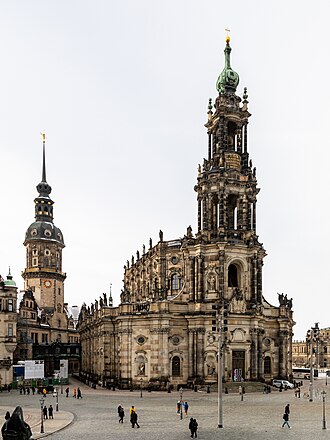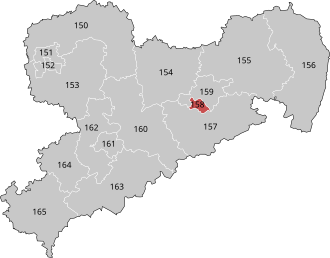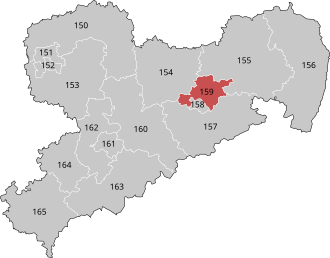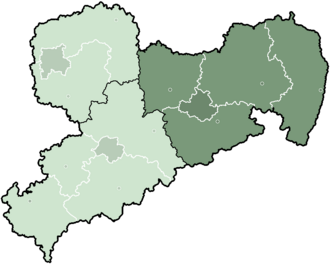Discover Your Roots
SIGN UPDiscover Your Roots
SIGN UPThe name Dresden is of German origin and is primarily a gender-neutral name. It means "People From The Forest By The River." The city of Dresden, located in the German state of Saxony, has a rich history and cultural significance. Its name and the names of its boroughs and rivers have Sorbian origins, reflecting the city's historical ties to the Sorbian people. Dresden was a prominent royal residence and cultural center for the Electors and Kings of Saxony, known for its Baroque and Rococo city center. Despite the devastating bombing during World War II, Dresden has undergone restoration and has reclaimed its status as a cultural, educational, and economic hub of Germany. The city is also known for its architectural landmarks, art collections, and vibrant cultural scene, making it one of the most visited cities in Germany.

Dresden Cathedral, also known as the Cathedral of the Holy Trinity, Dresden, is the Catholic Cathedral of Dresden, Germany. Built between 1738 and 1751 by architect Gaetano Chiaveri, it stands as one of Dresden's foremost landmarks. Commissioned by Augustus III, Elector of Saxony and King of Poland, the cathedral was built for the use of Catholic rulers in a predominantly Protestant city. The church suffered heavy damage during the bombing of Dresden in World War II but was restored by the East German government and further renovated following reunification. It is now the cathedral of the Diocese of Dresden-Meissen and a prominent burial site of the House of Wettin, including Polish monarchs. The cathedral features a meticulously restored organ by Gottfried Silbermann and a Rococo pulpit by Balthasar Permoser. Notably, the crypts hold the remains of King Augustus the Strong, the last King of Saxony, and various other members of the Wettin family, as well as Polish princes and princesses. The cathedral is open for free entry during the daytime and is a significant part of Dresden's historical and cultural landscape.

Dresden I is an electoral constituency in central Saxony, comprising the southern part of the city of Dresden. It was established in 1990 after German reunification and has undergone changes in numbering over the years. The constituency has been represented by various members, with Markus Reichel of the Christian Democratic Union (CDU) serving from 2021 to 2025, and Thomas Ladzinski of the AfD taking over from 2025. Dresden I encompasses the Ortsamtsbereiche of Altstadt, Blasewitz, Leuben, Plauen, and Prohlis and has witnessed several elections, with the most recent being in 2025. Over the years, the constituency has seen representatives from different political parties, reflecting the dynamic nature of its political landscape. The area has a rich history and plays a significant role in Saxony's political dynamics.

Dresden II – Bautzen II is a constituency in central Saxony, Germany, represented in the Bundestag. It was established in 1990 after German reunification and is currently designated as constituency 159. The constituency includes the northern and western parts of Dresden and a small portion of the Bautzen district, comprising municipalities such as Arnsdorf, Großröhrsdorf, Ottendorf-Okrilla, Radeberg, and Wachau. Over the years, it has undergone several name changes and numbering system adjustments. Matthias Rentzsch of the AfD is the current representative of Dresden II – Bautzen II, succeeding Lars Rohwer from the Christian Democratic Union. The constituency was first represented by Johannes Nitsch, followed by Arnold Vaatz, who served multiple terms. The constituency's election results and history reflect its significance in the German political landscape.

The Direktionsbezirk Dresden was one of the three former administrative regions of Saxony, Germany, situated in the eastern part of the state. It encompassed the Planungsregionen Oberlausitz-Niederschlesien and Oberes Elbtal/Osterzgebirge. Established on 1 August 2008, it replaced the Dresden Government Region and was dissolved in March 2012. The administrative divisions and governance structure of the region were integral to its functions. The Bezirk Dresden and its official website were important resources for residents and stakeholders. Although no longer in existence, the historical and administrative significance of the Direktionsbezirk Dresden remains noteworthy within the context of Saxony's governance evolution.

All images displayed on this page are sourced from Wikipedia or Wikimedia Commons.We use these images under their respective Creative Commons or public domain licenses. Wherever applicable, author attributions and license information are provided. If you believe an image is used incorrectly or outside its license terms, please contact us so that we can review and correct the issue.